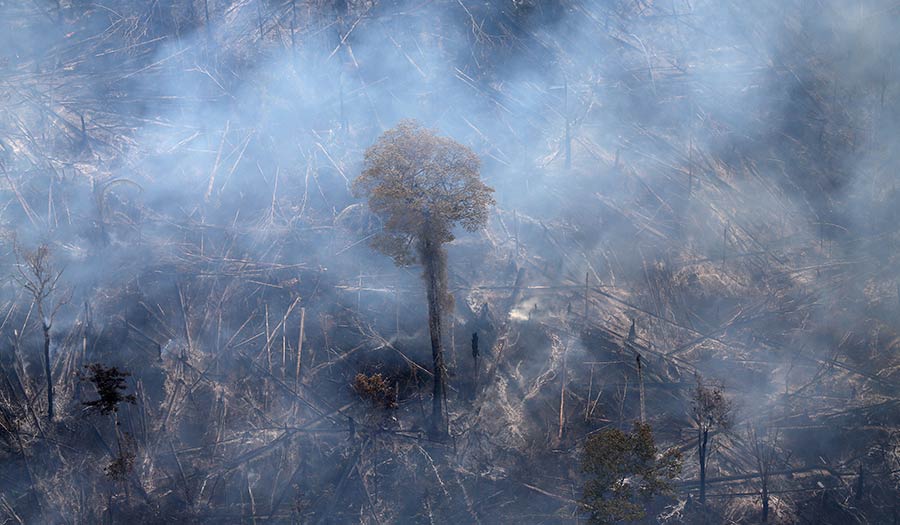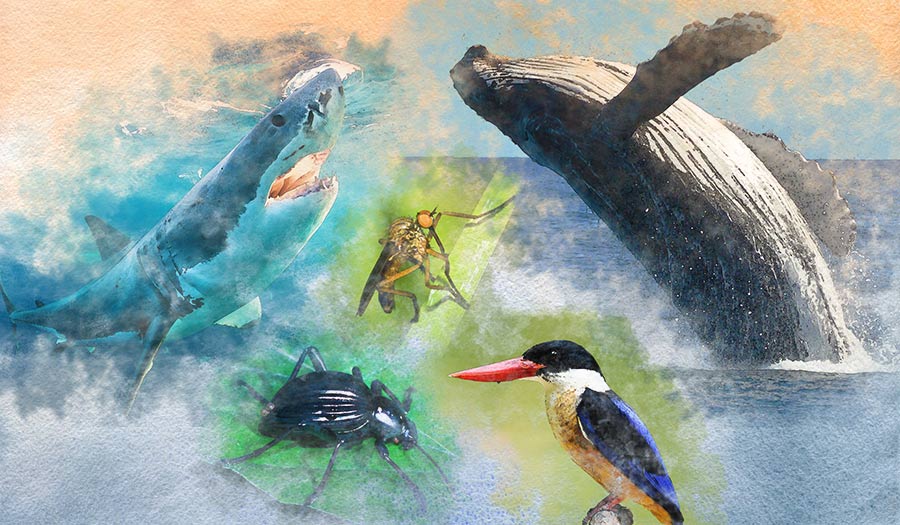 REUTERS/Ricardo Moraes
REUTERS/Ricardo Moraes
An aerial view shows a tract of Amazon jungle burning as it is cleared by farmers in Itaituba, Para, Brazil (Sept. 26, 2019).
Subscribe to the Real Truth for FREE news and analysis.
Subscribe NowBRASILIA (Reuters) – Humans have degraded or destroyed roughly two-thirds of the world’s original tropical rainforest cover, new data reveals.
Logging and land conversion, mainly for agriculture, have wiped out 34 percent of the world’s original old-growth tropical rainforests, and degraded another 30 percent, leaving them more vulnerable to fire and future destruction, according to an analysis by the non-profit Rainforest Foundation Norway.
More than half of the destruction since 2002 has been in South America’s Amazon and bordering rainforests.
As more rainforest is destroyed, it becomes more difficult for remaining forests to survive, said the report’s author Anders Krogh, a tropical forest researcher.
“It’s a terrifying cycle,” Mr. Krogh said. The total lost between just 2002 and 2019 was larger than the area of France, he found.
The rate of loss in 2019 roughly matched the annual level of destruction over the last 20 years, with a football field’s worth of forest vanishing every 6 seconds, according to another recent report by the World Resources Institute.
The Brazilian Amazon has been under intense pressure in recent decades, as an agricultural boom has driven farmers and land speculators to torch plots of land for soybeans, beef and other crops. That trend has worsened since 2019, when President Jair Bolsonaro took office and began weakening environmental enforcement.
But the Amazon also represents the best hope for preserving what rainforest remains. The Amazon and its neighbors—the Orinoco and the Andean rainforest—account for 73.5 percent of tropical forests still intact, according to Mr. Krogh.
The new report “reinforces that Brazil must take care of the forest,” said Ane Alencar, a geographer with the Amazon Environmental Research Institute who was not involved in the work. “Brazil has the biggest chunk of tropical forest in the world and is also losing the most.”
Southeast Asian islands, mostly belonging to Indonesia, collectively rank second in terms of forest destruction since 2002, with much of those forests cleared for palm oil plantations.
Central Africa ranks third, with most of the destruction centered around the Congo River basin, due to traditional and commercial farming as well as logging.
Forests that were defined in the report as degraded had either been partially destroyed, or destroyed and since replaced by secondary forest growth, Rainforest Foundation Norway said.
That report’s definition for intact forest may be overly strict, cautioned Tasso Azevedo, coordinator of the Brazilian deforestation mapping initiative MapBiomas. The analysis only counts untouched regions of at least 193 square miles as intact, leaving out smaller areas that may add to the world’s virgin forest cover, he said.
Mr. Krogh explained that this definition was chosen because smaller tracts are at risk of the “edge effect,” where trees die faster and biodiversity is harder to maintain near the edge of the forest. A forest spanning about 200 square miles can fully sustain its ecosystem, he said.
 Copying the Genius in Nature – What Biomimicry Reveals
Copying the Genius in Nature – What Biomimicry Reveals